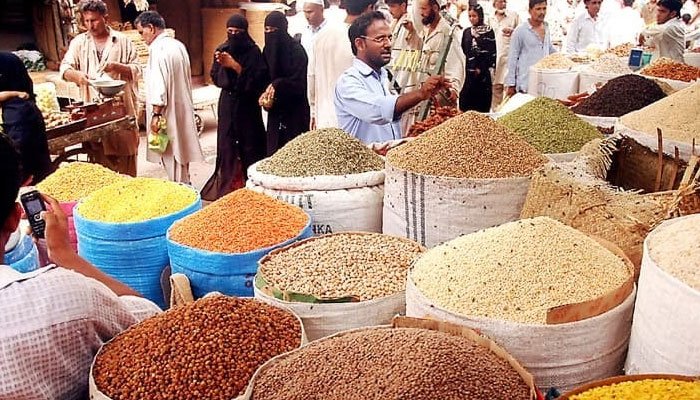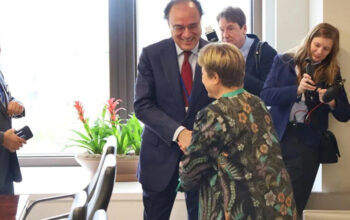By Staff Reporter
KARACHI: Pakistan’s consumer inflation rate slowed sharply to 0.3 percent year-on-year in April 2025, the lowest level in approximately six decades, marking a dramatic turnaround from the double-digit crises that gripped the economy a year earlier, data from the Pakistan Bureau of Statistics (PBS) showed on Friday.
The April figure reflects a decline of 0.4 percentage points from March’s 0.7 percent reading and highlights a sustained disinflationary trend in the South Asian nation. A year ago, in April 2024, inflation stood at a punishing 17.3 percent. Over the first 10 months of fiscal year 2025 (July to April), average inflation was 4.73 percent, a steep retreat from the 25.97 percent recorded in the same period of the previous fiscal year.
The latest inflation number beat market expectations, which had forecast the consumer price index (CPI) to range from 0.05 percent to 0.8 percent.
Analysts noted that the sharp slowdown, driven primarily by steep declines in food and electricity prices, has raised concerns that Pakistan may be edging into deflationary territory. The unprecedented drop in these key sectors has pushed headline inflation to levels not seen in decades.
For the full fiscal year 2025, market forecasts project inflation to range between 4.5 percent and 5.5 percent, supported by sustained decreases in electricity, oil, and food prices. Fitch Ratings anticipates an average inflation rate of 5 percent in FY25, before it climbs to 8 percent in FY26.
With inflation cooling significantly, analysts expect the State Bank of Pakistan (SBP) to cut its policy rate by 50 basis points to 11.5 percent at its monetary policy meeting scheduled for May 5, 2025. This outlook is underpinned by the continued decline in inflation, a robust real interest rate cushion, and persistent weakness in domestic industrial production.
At the current headline inflation rate of 0.3 percent, real interest rates stand at approximately 11.7 percent, providing the central bank with room to ease monetary policy while preserving macroeconomic stability.
However, core inflation remains a concern, with non-food, non-energy inflation (NFNE) projected at 7.72 percent year-on-year in April. The high base effect, which has aided the disinflationary trend, is also expected to wane in the coming months, potentially exerting upward pressure on future readings.
A survey conducted by brokerage firm Arif Habib Limited revealed mixed expectations for the SBP’s next move. Of the respondents, 54.6 percent anticipate a policy rate cut, with 18.2 percent specifically predicting a 50 basis points reduction. Meanwhile, 45.4 percent expect the central bank to hold rates steady.
Copyright © 2021 Independent Pakistan | All rights reserved




